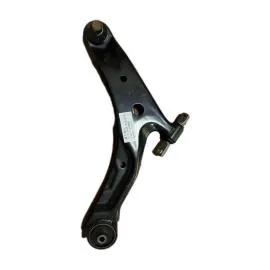
-
 Afrikaans
Afrikaans -
 Albanian
Albanian -
 Amharic
Amharic -
 Arabic
Arabic -
 Armenian
Armenian -
 Azerbaijani
Azerbaijani -
 Basque
Basque -
 Belarusian
Belarusian -
 Bengali
Bengali -
 Bosnian
Bosnian -
 Bulgarian
Bulgarian -
 Catalan
Catalan -
 Cebuano
Cebuano -
 Corsican
Corsican -
 Croatian
Croatian -
 Czech
Czech -
 Danish
Danish -
 Dutch
Dutch -
 English
English -
 Esperanto
Esperanto -
 Estonian
Estonian -
 Finnish
Finnish -
 French
French -
 Frisian
Frisian -
 Galician
Galician -
 Georgian
Georgian -
 German
German -
 Greek
Greek -
 Gujarati
Gujarati -
 Haitian Creole
Haitian Creole -
 hausa
hausa -
 hawaiian
hawaiian -
 Hebrew
Hebrew -
 Hindi
Hindi -
 Miao
Miao -
 Hungarian
Hungarian -
 Icelandic
Icelandic -
 igbo
igbo -
 Indonesian
Indonesian -
 irish
irish -
 Italian
Italian -
 Japanese
Japanese -
 Javanese
Javanese -
 Kannada
Kannada -
 kazakh
kazakh -
 Khmer
Khmer -
 Rwandese
Rwandese -
 Korean
Korean -
 Kurdish
Kurdish -
 Kyrgyz
Kyrgyz -
 Lao
Lao -
 Latin
Latin -
 Latvian
Latvian -
 Lithuanian
Lithuanian -
 Luxembourgish
Luxembourgish -
 Macedonian
Macedonian -
 Malgashi
Malgashi -
 Malay
Malay -
 Malayalam
Malayalam -
 Maltese
Maltese -
 Maori
Maori -
 Marathi
Marathi -
 Mongolian
Mongolian -
 Myanmar
Myanmar -
 Nepali
Nepali -
 Norwegian
Norwegian -
 Norwegian
Norwegian -
 Occitan
Occitan -
 Pashto
Pashto -
 Persian
Persian -
 Polish
Polish -
 Portuguese
Portuguese -
 Punjabi
Punjabi -
 Romanian
Romanian -
 Russian
Russian -
 Samoan
Samoan -
 Scottish Gaelic
Scottish Gaelic -
 Serbian
Serbian -
 Sesotho
Sesotho -
 Shona
Shona -
 Sindhi
Sindhi -
 Sinhala
Sinhala -
 Slovak
Slovak -
 Slovenian
Slovenian -
 Somali
Somali -
 Spanish
Spanish -
 Sundanese
Sundanese -
 Swahili
Swahili -
 Swedish
Swedish -
 Tagalog
Tagalog -
 Tajik
Tajik -
 Tamil
Tamil -
 Tatar
Tatar -
 Telugu
Telugu -
 Thai
Thai -
 Turkish
Turkish -
 Turkmen
Turkmen -
 Ukrainian
Ukrainian -
 Urdu
Urdu -
 Uighur
Uighur -
 Uzbek
Uzbek -
 Vietnamese
Vietnamese -
 Welsh
Welsh -
 Bantu
Bantu -
 Yiddish
Yiddish -
 Yoruba
Yoruba -
 Zulu
Zulu
Upper Control Arm for Driver Side Suspension System Replacement Guide
Understanding the Driver Side Upper Control Arm Importance, Function, and Maintenance
The driver side upper control arm is a critical component of a vehicle's suspension system, playing a pivotal role in the overall handling, alignment, and comfort of the ride. Typically found in independent suspension systems, the upper control arm connects the vehicle’s chassis to the wheel assembly, allowing for controlled movement and stability during driving. This article explores the importance of the driver side upper control arm, its functions, and essential maintenance practices to ensure optimal performance.
The Role of the Upper Control Arm
The upper control arm serves several vital functions in vehicle dynamics. Primarily, it acts as a link between the vehicle's body and the wheel assembly, providing a pivot point for the wheel's vertical movement. When the wheels encounter bumps or irregularities in the road, the upper control arm allows the wheel to move up and down while maintaining proper alignment. This independence is crucial for ensuring that the tires maintain contact with the road, thus optimizing traction and handling.
Moreover, the upper control arm plays a significant role in the suspension geometry of the vehicle. It helps maintain the camber angle of the wheels, which is essential for promoting even tire wear and improving braking efficiency. An improper camber angle can lead to uneven tire wear, resulting in increased costs for replacement and poor handling characteristics.
Signs of Wear and Tear
Like any vehicle component, the upper control arm can wear out over time due to constant use and exposure to road conditions. Several signs indicate that the driver side upper control arm may need inspection or replacement. These include
1. Poor Handling If the vehicle feels loose or unresponsive during turns, it could be due to a worn upper control arm affecting alignment. 2. Uneven Tire Wear Noticeable wear on the inner or outer edges of the tires can indicate issues with the suspension system, including problems with the upper control arm.
driver side upper control arm

3. Strange Noises Clunking or knocking sounds while driving over bumps may suggest that the control arm or its bushings are deteriorating.
4. Visual Inspection If any visible cracks, rust, or damage are present on the control arm, it’s essential to address these issues before they lead to more significant problems.
Maintenance and Replacement
Regular maintenance of the upper control arm is essential for maintaining the vehicle's suspension system. A good practice includes inspecting the component during routine maintenance checks, particularly if you notice any of the signs mentioned earlier. Mechanics often check the bushings and ball joints associated with the upper control arm, as these parts are susceptible to wear and can affect overall performance.
If replacement is necessary, it is vital to choose high-quality parts that meet or exceed OEM (Original Equipment Manufacturer) specifications. Using subpar components can lead to further issues down the line, including premature wear and additional repair costs.
Conclusion
The driver side upper control arm plays an indispensable role in vehicle suspension, significantly impacting safety and performance. Understanding its functions, keeping an eye out for wear signs, and conducting routine maintenance can extend the life of the suspension system and ensure a smoother, safer ride. Regular attention to this component not only enhances the driving experience but also contributes to the longevity of the entire vehicle. By prioritizing the health of the upper control arm, drivers can enjoy better handling, improved comfort, and enhanced safety on the road.







